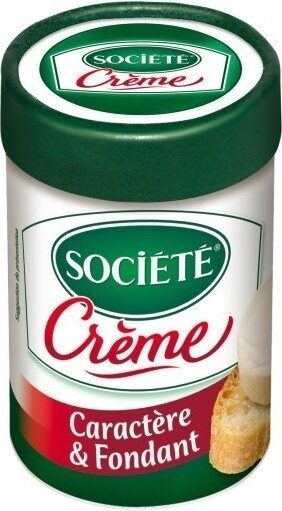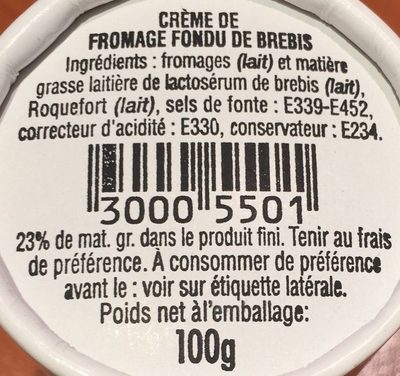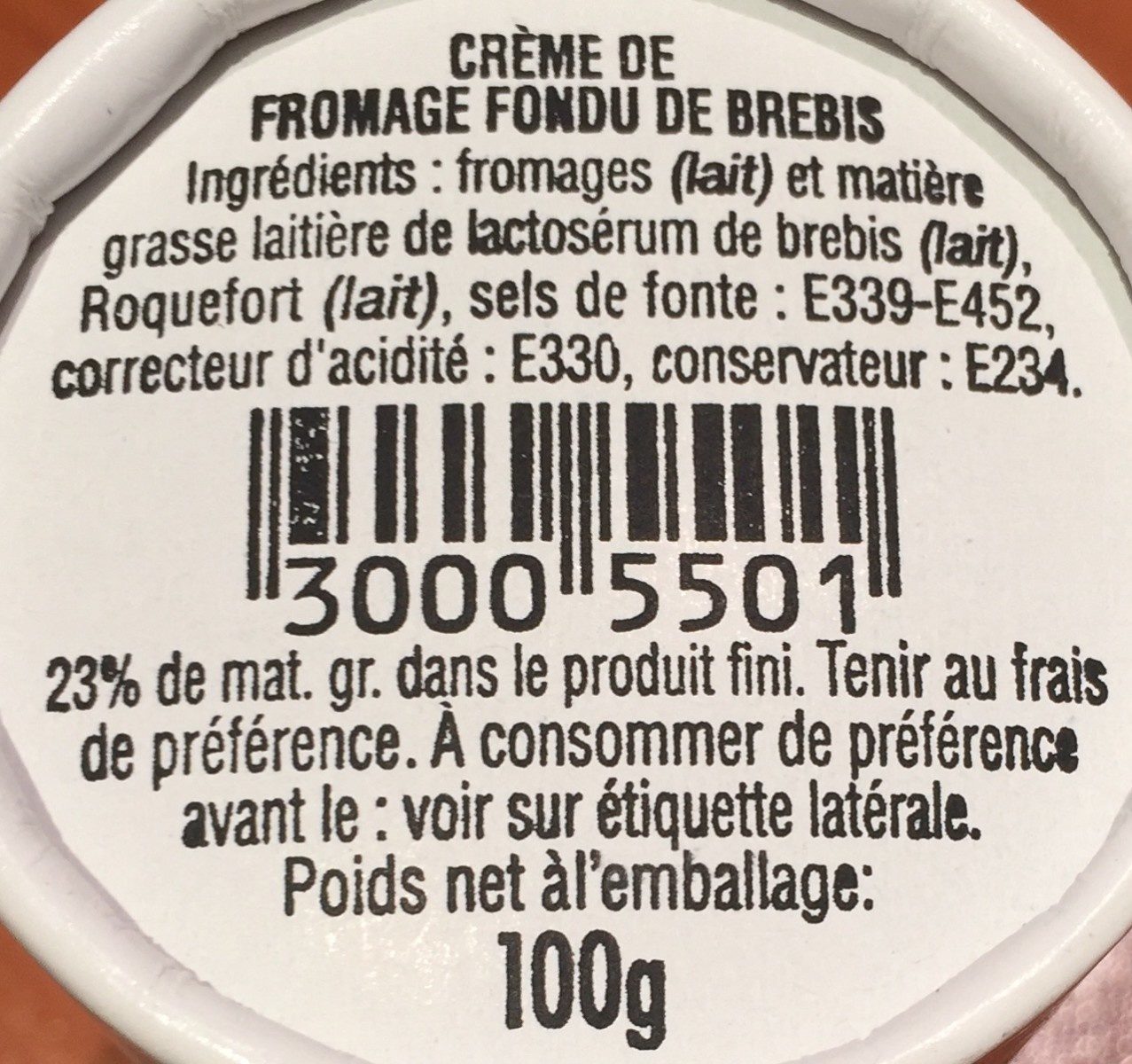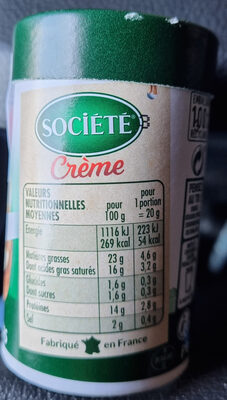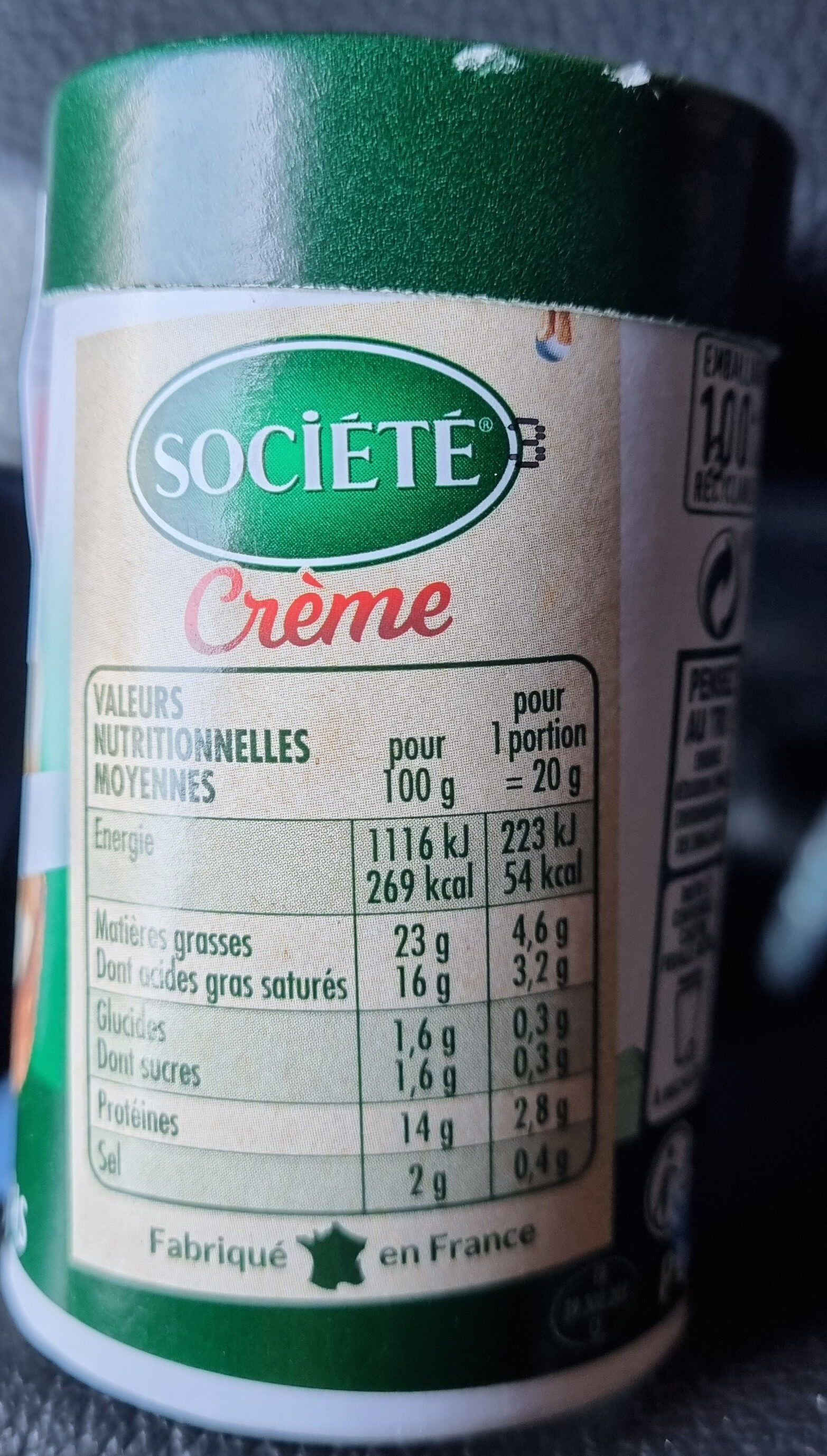Société crème - 100 g, 5 portions individuels
This product page is not complete. You can help to complete it by editing it and adding more data from the photos we have, or by taking more photos using the app for Android or iPhone/iPad. Thank you!
×
Barcode: 30005501
Common name: Crème de fromage fondu de brebis
Quantity: 100 g, 5 portions individuels
Packaging:
Metal, Box, Cardboard, Fresh, Sheet, Green dot, Triman, fr:Boite et couvercle carton - feuille metal à recycler, fr:Pensez au tri!, fr:Pièce

Brands: Société
Categories: Dairies, Fermented foods, Fermented milk products, Cheeses, Spreads, Salted spreads, Fresh foods, French cheeses, Processed cheese, Sheep's-milk cheeses, Cheese spreads, Industrial cheese
Labels, certifications, awards: Made in France
Traceability code: FR 39.300.002 CE - Lons-le-Saunier (Jura, France)
Link to the product page on the official site of the producer: http://www.roquefort-societe.com/nos-pro...
Stores: Leader Price, Magasins U, Delhaize, carrefour.fr
Matching with your preferences
Report a problem
Data sources
Product added on by jeanbono
Last edit of product page on by foodless.
Product page also edited by aleene, countrybot, date-limite-app, driveoff, emeline12, foodrepo, foodviewer, foodvisor, inf, jacob80, keragui, kiliweb, kryskool, luludin, magasins-u, marmotte73, openfoodfacts-contributors, packbot, poupoune42, roboto-app, yuka.IJlhEO6TDuYbLN_07r86zSKjLr_vBfBpBGc9og, yuka.SFk4Qkd2NDlxL0phcDhFYzF3UFgzSTlXeEx5bVVET1RKOWhKSUE9PQ, yuka.U3FjUEd2c091S0FvaXZjZTdqN0oyTzk4N1llYlZtRHBJT05NSUE9PQ, yuka.UjdvZlQ2aFJnZGczeHNKaitBbnUyNElsLzdhMWZtbTRjYzRWSVE9PQ, yuka.VnE0cUZZUXZuK1lhZzlvRG9oejd3dkFvbnJhMmJISHROdW83SVE9PQ, yuka.VzRNT01MWlF2ZElEaE5ndTd3cmYydmQ3NkwrV2QyaVFJTEVxSVE9PQ, yuka.WHBJUU02Z21pdEFQaGZFRDdET0t3c3haem9PMFltNjNkdWdESVE9PQ, yuka.WTZvT0hiMEhvOVFhbzhRUTFDUHR3K2gyNlpDRFdrUzVHYlU2SVE9PQ, yuka.WUpnK0Nyc2dnZm8xcXZRYzhBbk8xOHBPMzVtWFQxT1VNY1U4SVE9PQ, yuka.YTdvdE9vOEx2cVVyeHRzeDlUWHE2dEpVNVlLWVUxT3RkUEl6SUE9PQ, yuka.sY2b0xO6T85zoF3NwEKvllxsDt2G-C7DDCz5mEiw6-euJJHhXOgq-anWbKo.

